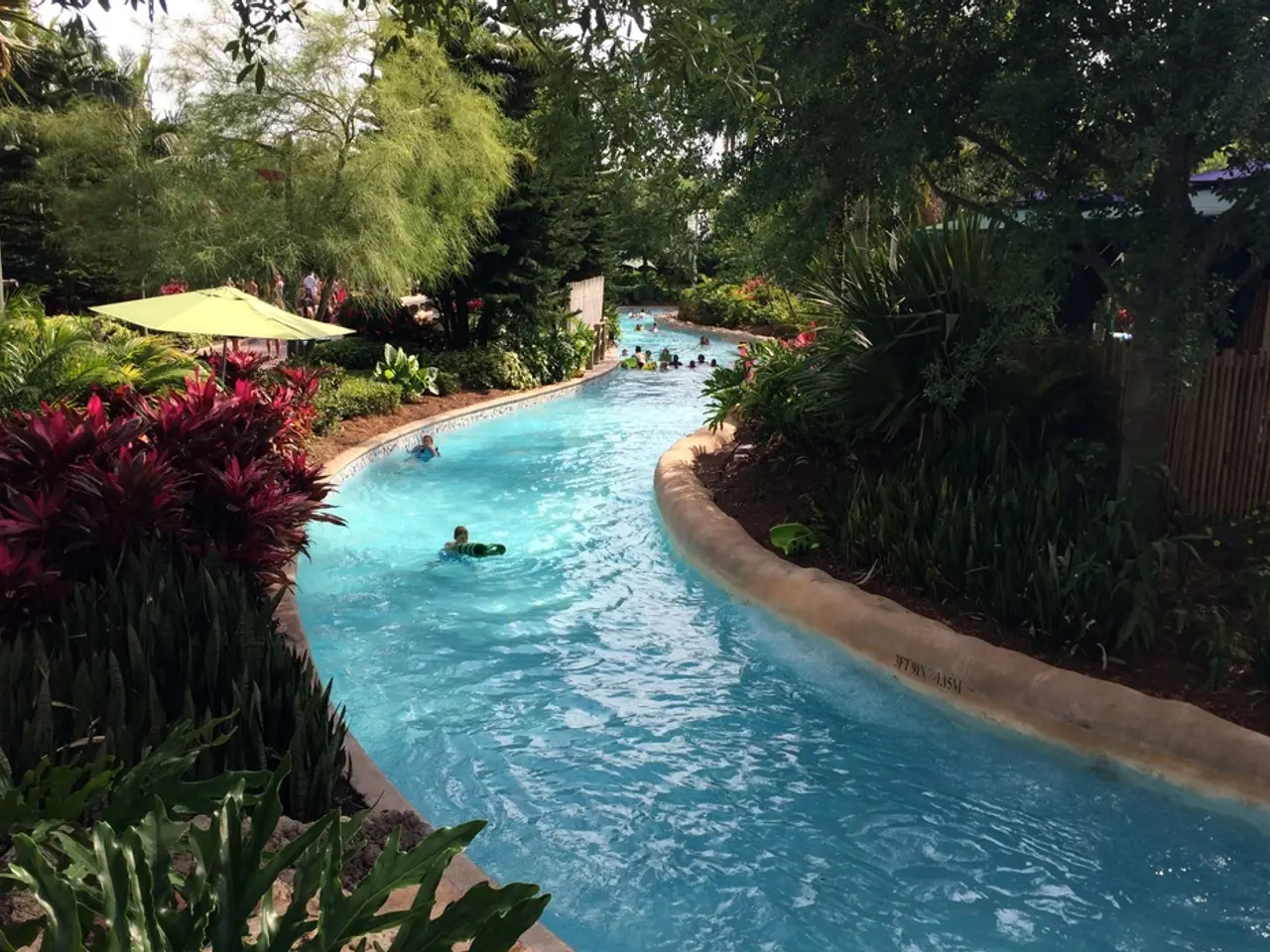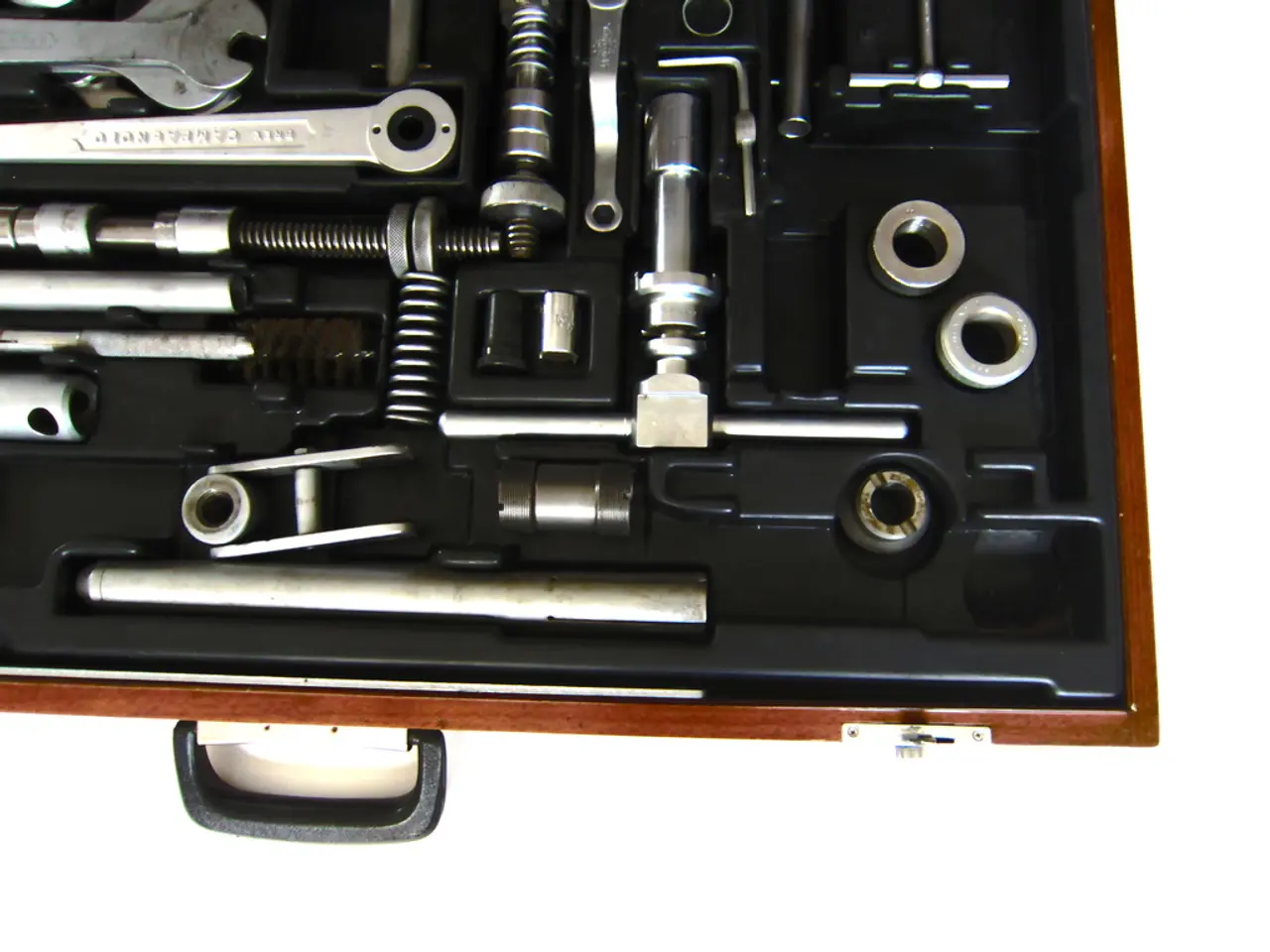Method for Cleansing and Electrolyzing a Murky Green Swimming Pool
In the warmer months, green pool water can be a common issue for pool owners. This article will provide a clear and straightforward guide on how to prevent and treat green pool water effectively.
The culprit behind green pool water is algae, which thrives in stagnant water and feeds on phosphates. To prevent algae growth, maintaining proper chlorine levels is crucial as chlorine is the primary sanitizer that kills algae. Running the pool pump for at least eight hours daily ensures good water circulation and filtration, which helps prevent algae growth. Additionally, clean or replace pool filters regularly to maintain their efficiency in removing contaminants.
For treatment, a shock chlorination, often called "shocking" the pool, is used to raise free chlorine levels temporarily to kill existing algae. Light green pools require about 2x the normal shock dose, medium green pools require 3x, and dark green or swampy pools may need 4x or more. Cal-hypo, with at least 65% available chlorine, is best for aggressive green pool treatment. Lowering the pH to around 7.2 helps the shock pack a punch in green pool treatment.
After the shock treatment, consider applying a weekly algaecide, which offers supplementary algae protection, especially during hot or rainy seasons, but it should never replace regular chlorine use. Regular pool maintenance also includes monitoring and balancing pool water chemistry (pH, alkalinity, and chlorine), brushing pool surfaces to remove algae buildup, and vacuuming debris to prevent nutrients that algae thrive on.
Brushing the pool once a week, especially behind ladders, steps, and in corners, helps prevent algae growth. A robotic pool cleaner can help speed up the process of cleaning a green pool, especially in hard-to-reach corners. If the pool water is swamp-green, a flocculant or partial drain may be necessary before cleaning.
It's essential to test the water weekly to make adjustments before the pool turns green. Poor circulation, dirty filters, high phosphate levels, and heatwaves can contribute to algae growth. Running the pump 24/7 after shocking helps keep the water moving and helps the filter catch dying algae.
Debris in the pool can consume chlorine, making it less effective. Removing debris from the pool before shocking helps prevent the waste of chlorine. Dichlor shock is not recommended when CYA levels are already high.
In cases of heavy rain, pool parties, or heatwaves, shocking the pool helps maintain chlorine levels. Keeping chlorine consistently between 2-4 ppm can help prevent green pool water. A clogged or dirty filter can hinder proper circulation and chemical effectiveness. Daily backwashing or cleaning of the filter is necessary during green pool treatment, as green algae clogs up cartridges and sand quickly.
Swimming in a green pool can pose hygiene risks and be a drowning hazard. Therefore, it's crucial to address green pool water promptly and follow the guidelines provided in this article to ensure a clean, safe, and enjoyable swimming experience.
[1] Pool Maintenance Tips: Preventing Green Pool Water. (n.d.). Retrieved from https://www.poolcaretips.com/green-pool-water/ [2] How to Get Rid of Green Pool Algae. (n.d.). Retrieved from https://www.swimmingpool.com/blog/how-to-get-rid-of-green-pool-algae/
Maintaining a balanced home-and-garden lifestyle includes taking care of the pool, preventing green pool water by running the pool pump for at least eight hours daily, and regularly cleaning or replacing pool filters. Adequate pool-lifestyle management also involves balancing the pool water chemistry, brushing pool surfaces, and vacuuming debris to prevent nutrients that algae thrive on.
Weekly algaecide application, especially during hot or rainy seasons, offers supplementary algae protection, but should never replace regular chlorine use for an effective home-and-garden setup and clean pool water.




